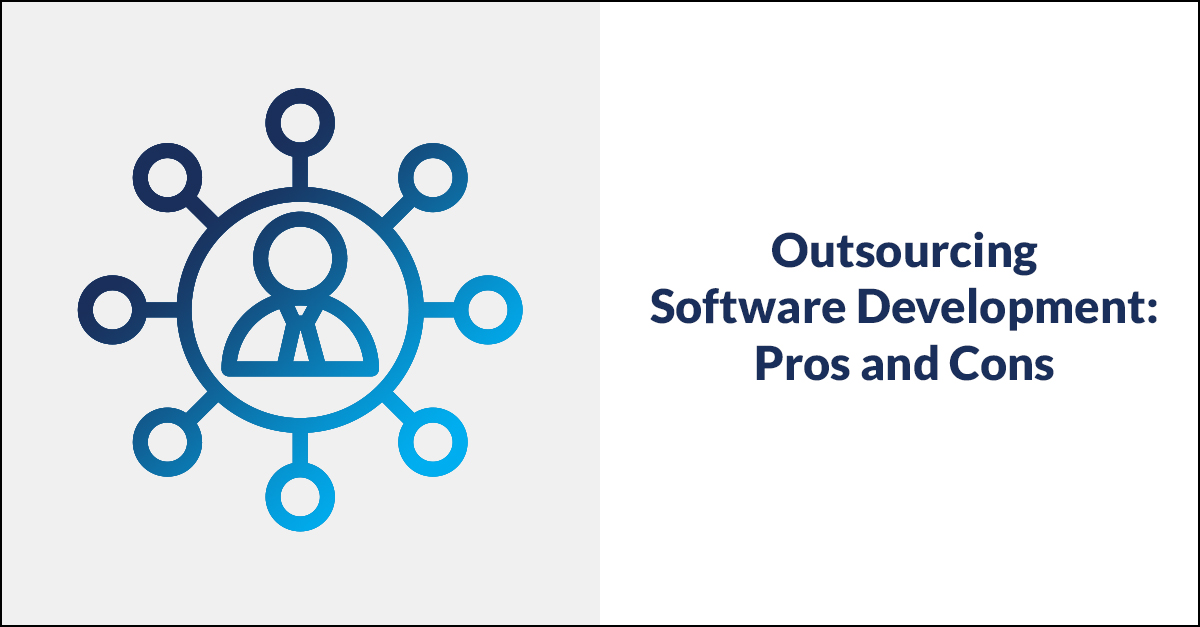
When your organization has a custom software development project—be it a brand new system or enhancements to a current platform—you have a few options for making it happen:
- Complete the project with in-house development resources
- Outsource the project to a development partner
- Use a combination of internal and external resources
How you approach your software project depends on a lot of factors and can have a big impact on the ultimate outcome. Here’s an overview of the pros and cons of outsourcing software development to a third-party partner.
What to Look for in an Software Development Partner
Learn how to find the right-fit partner for software development outsourcing.
Pros of Outsourcing Software Development
There are a lot of benefits that come with working with an external partner on software projects.
1. Larger Talent Pool with Latest Technology Skills
One of the biggest pros of outsourcing software development is benefiting from a variety of technical skills without having to hire multiple people internally. It can be inefficient and expensive to hire full-time team members with expertise in all the
different languages, tools, and platforms you may need. For example, you probably wouldn’t hire a full-time mobile app development specialist if only a small percentage of your projects require those skills. When you outsource, you get fractional,
cost-effective access to the skills you need.
2. Cost Control
Outsourcing provides a much greater level of control and flexibility when it comes to development costs. If you need to pause development for some reason, many of your costs pause as well. Whereas if you have internal resources, you still continue to
pay those team members, regardless of whether the project is moving forward or not.
Another often-overlooked benefit of outsourcing is a clear understanding of your development costs. When you have internal resources working on multiple projects or systems, it’s hard to get a clear picture of what your investment in a given system,
project, or enhancement is. And when you don’t know your investment, how do you calculate your return on said investment? When you outsource development, you know exactly what you invested.
Do you struggle with scope creep on your internal projects? Because the true investment isn’t always clear, as described above, projects can easily go on and on and on, as scope and features are added (whether they’re truly valuable or not).
A good third-party partner will keep you focused and help you control the scope, so the project doesn’t drag on endlessly.
3. Your Internal Team Stays Focused
Software development most likely isn’t your organization’s core competency. Outsourcing software development allows you to stay focused on your whatever that core competency is. Your development team can stay zeroed in on maintaining mission-critical
systems while new systems and enhancements are handled by your development partner.
4. Fast Access to Senior Development Talent
Hiring a senior developer, according to Devskiller, can take 43 days. During that time, you incur real costs and opportunity costs into the tens
of thousands of dollars. When you need the skills of a senior developer—or a team of them—a third-party development partner has you covered. You can have a senior-level developer working on your system in a matter of days instead of spending
weeks of time and money finding and hiring them yourself.
Cons of Outsourcing Software Development
We’re a bit biased when it comes to the benefits of working with a custom software development partner, but even we know it’s not the right decision for every organization or every project. Here are some of the downsides to weigh alongside
the benefits.
1. Onboarding to Existing Systems
When you bring on an outside development partner, there’s an inevitable onboarding period. They need to learn your business goals, your IT goals, existing systems, and future plans. If you bring on a partner to work on an existing system, make sure
to build in time for them to get their bearings in the code.
2. Underestimated Stakeholder Involvement
We’re very up front with our clients about the time investment expected of the client product owner (PO). But not all development companies set appropriate expectations. When you work with an outsourced development company, you’ll need (well,
want) to be hands-on throughout the process. Our clients attend weekly or bi-weekly meetings, are involved in feature and story prioritization, and are expected to be available to make decisions quickly to keep the team moving.
3. Finding the Right Fit
It can take time and research to find a development partner that fits in terms of work processes, communication styles, and company philosophies. You can do your due diligence, but it’s hard to confirm a good match until you dig in. Fully evaluate
your potential partners and start with a small project to lower your risk.
To Outsource or Not to Outsource?
That is the question. And now that you know the pros and cons, read our guide on making the outsourcing decision that’s right for you.
Ready to work with an experienced third-party development partner?
Reach out.